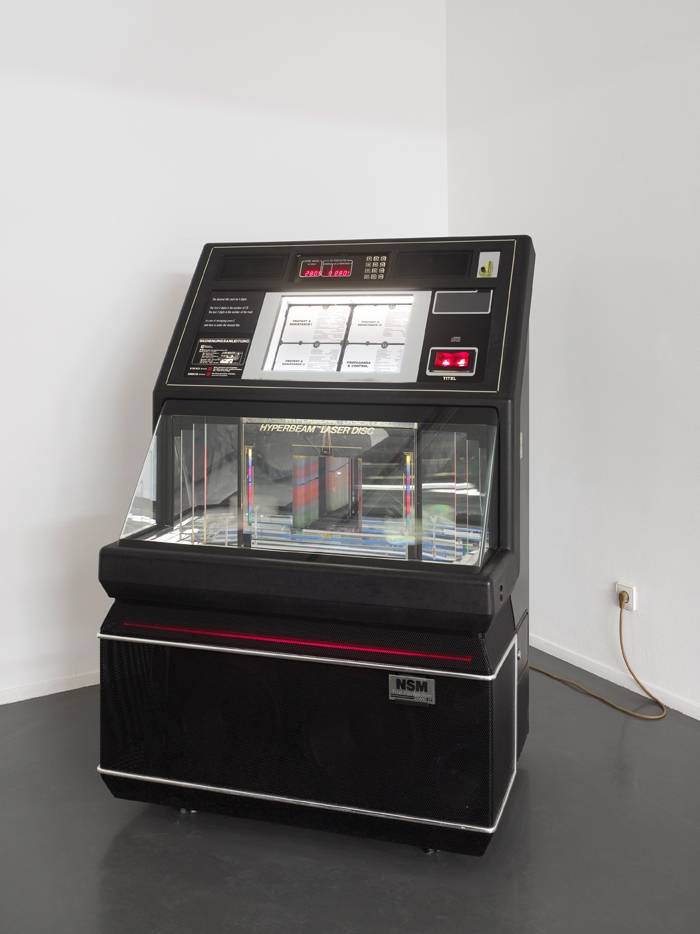Okwui Enwezor’s presentation of his curatorial vision for the 56th Venice Biennale – which is to be held between 9 May and 22 November next year – appears on initial impressions to represent a serious reflection upon these unstable times. Titled All the World’s Futures, the Biennale will attempt to address ‘the ruptures that surround and abound around every corner of the global landscape today’, as Enwezor told an audience assembled at the Biennale headquarters, close to Venice’s Piazza San Marco, in late October.
It remains to be seen whether Enwezor’s Biennale lives up to his ambitions, though the centrepiece of his proposal – to have performers read all four volumes of Das Kapital (1867–94) over the entire course of the Biennale – promises to provoke intense debate. Above all, one might ask whether this act, at one of the world’s most prestigious art events, presents an opportunity to put Marx’s thought at the centre of debate on the ongoing economic crisis or, rather, hammers a final nail into the coffin of the left. Is politically motivated art resilient enough to withstand the inherent contradiction of Kapital taking centre stage during the Biennale’s exclusive opening days (from 6 to 9 May), when its reading will begin in front of an assortment of the artworld’s most powerful players?
Beneath these questions lies a deeper one: how art might be most useful in a social context. The Fondazione Prada’s Art or Sound – an exhibition that was on show (between 7 June and 1 November) at nearby Ca’Corner and examined the relationship between art and audio – allowed for reflection upon vastly different approaches to art’s role in relation to both society and audience empowerment. Artists and craftsmen as diverse as Giovan Battista Cassarini, Marcel Duchamp, Theo van Doesburg, John Cage, Robert Rauschenberg, Richard Artschwager, Bruce Nauman, Ken Butler, Martin Creed and Ruth Ewan were among those represented by its 180 works. The resulting cacophony presented a carnivalesque journey through the history of sound art. Highlights included Gebrüder Wellershaus’s earlytwentiethcentury fairground organ, a loud, impossibly clunky machine that recalled the deeply machinic and physical aspect of music reproduction in times gone by.
Two works on display exemplified two vastly different approaches to both social art and the role of sound in empowering the individual. Cassarini’s Contralto Viola (1687) is a violin made of white marble with intricately laid marblepaste inlays. The piece, beautiful to look at but unfit for playing, could be seen to represent both the distance of music from the uneducated masses and the necessary remove of artistic endeavour from everyday life: aesthetic reflection arguably demands critical distance from social problems. From this distance, novel solutions may emerge. Yet aside from this, such an approach to art can have a meditative aspect that is of value in itself. After all, when has a person ever been responsible for wrongdoing while in a moment of detached contemplation?
When has a person ever been responsible for wrongdoing while in a moment of detached contemplation?
At the other extreme, Ruth Ewan’s A Jukebox of People Trying to Change the World (2003–) is a CD jukebox loaded with discs featuring over 2,000 tracks categorised into sections such as ‘War’, ‘Feminism’, ‘Civil Rights’, etc. Ewan’s work is an ongoing archive to which the public can submit song suggestions by web links as well as choose which songs play within a given display setting. The extreme opposite of Cassarini’s violin, it conveys very direct political messages via predominantly folk and protest songs, offering a high level of interaction. Such works aim to promote direct debate, though arguably lose the aspect of critical distance that reflection allows.
While it is unclear to what level the reading of Das Kapital at the 56th Biennale will be an interactive experience, it should represent – in terms of visibility – a new highpoint in the recent history of directly political art actions on the world stage. Whether it has the potential to move the cause of political art forward remains to be seen. With history being arguably cyclic, the performance may read more like an elegy ahead of a sharp turn towards purely aesthetic values. In the meantime the socially engaged artworld contingent would do well to develop the positive potential of reflection as an adjunct to its more direct activity.
This article was first published in the December 2014 issue.
